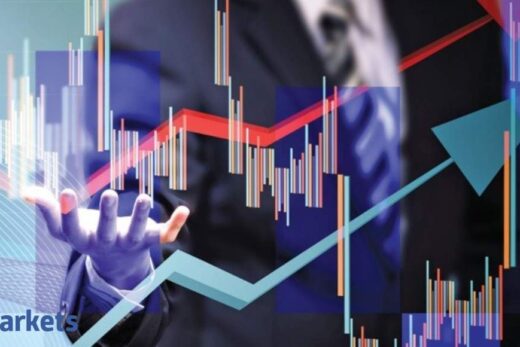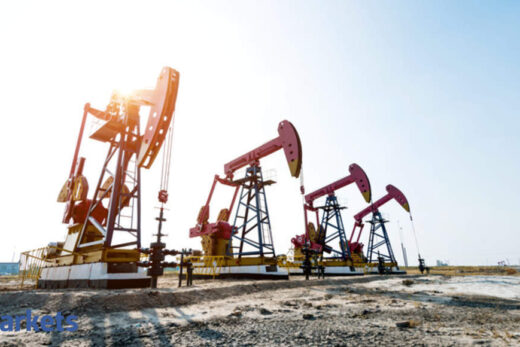Your latest series of notes which is Netra, talks about how we are coming out of a long winter and the capex cycle is finally starting in India. How much of that is already being factored in? Already half of FY22 has gone, part of 2023 too is now getting factored in because earnings after this quarter’s number came out actually for 2023 and 2024 and were trimmed at the margin?
Largely what I see is that part of 2023 is already factored in and we are seeing that valuations in some sectors are stretched but it is a longer trend. Market probably is factoring in enthusiastically next two years of earnings but I think there is a larger runway.
This theme of investments — which covers engineering, infrastructure,
, cement and many sectors which are key drivers — is more longer term and probably a bit more logical this time. Just to share one or two data points with you, in the 2004 to 2008 cycle, which is the only cycle spoken about in terms of capex recovery, and in the longer cycle from 2002 to 2011, the first part was driven by global numbers. The whole world was doing well, commodities were on the uptick, capacities were being built. The post 2008 shock capacities were built on excessive credit and that did not play out really well. So in a sense, that cycle was a mix of global tailwinds plus some amount of domestic credit which was not very logical in terms of capacity build up.
That cycle was more driven by brownfield expansion, some greenfield expansion plus a genuine pick up in both critical mass and growth rates.
By FY23, India will be doing about a trillion dollar in annual gross fixed capital formation or investments in GDP, which only about 12 nations have done ever. That is the critical mass. In the last five to six years, Covid included, the growth rates of annual increase in investments have fallen to about 6.5% while historically in many cycles, our growth has been about 15-16% and generally between 14% to 16%. I am not saying that we are going to go back to 15% growth or probably the super cycle of 2004 to 2008, which had 22% YoY growth. From 6.5%, if we go back to 10% plus, then we will be in for a very strong cycle which can last for five year plus and it has got a huge runway. So it is very important to trim our expectations a bit between FY22 and FY23. But we have to look at it from a larger cycle point of view rather than looking at it as a tactical bet.
That is a very interesting point because the first part of the question was actually aimed at positional guys — short-term and mid-term oriented guys and the second part was actually aimed at people who look at decadal opportunities or five year horizon. So the idea is do not be off market for long or you may miss out on a big tide! Talk to us about the credit cycle.
One more point to add there is if you look at another sector like cement, between 2005 and 2016, it had its strongest growth rate. Our production and consumption grew by about 7% CAGR and from 2016 to last year, that growth was only 50 bps. So, we have a long runway in many sectors. One can look at data like this and even a slight mean reversion can create a trend which can last for five years plus.
As far as credit growth goes. In the last one year, banks have barely performed. I am not even considering the clutch of PSU banks which went from point A to point B as real performance. Private sector banks and NBFCs have underperformed and there is negative return. But here is a case to believe that the January, February, March quarter or six months far out there could see uptick in credit growth because early enquiries of big capex are happening. What is your view on credit growth and which part of the lending universe will benefit first?
So two parts; first I think there is obviously a delayed recovery in borrowing and credit growth as a whole. When you look at BSE 500 and PAT growth that is going on, it very well aligns with how much recovery one should see in credit growth and I think that recovery on the corporate profitability side has already happened.
Generally, it goes in line with how credit growth pans out in the future and I am very confident that over the next six months or one year plus, we will see these numbers at least mean revert and go back to their more normal relative to nominal GDP growth rate numbers.
Secondly, the breakup shows it is driven by two things; first it is very visible in numbers. When we talk about the retail lending part, it is visible that domestic earnings at the bottom of the pyramid have been hit quite badly. A lot of demand for credit has been driven by the top quartile of households and the bottom quartile will come into picture once the economy stabilises, signs of which are being seen. Next six months will show where recovery becomes a revival and it becomes more stable. That part will add to some demand for credit.
On the corporate lending side, I am not very sure what is the timeline for capex and demand for credit from that sector because let us be very clear, the last credit cycle was driven very largely by corporate credit growth. This time, even if we see a capex cycle, many other sources of capital which are getting aligned and so it is not only going to be banking credit growth.
I think there is a bond market, there is a huge pipeline that the government has created, there are DFIs and a lot many other avenues. So I do not think that is the only avenue to look at banking credit growth. One will have to look at the full number which is financial resources flowing to the commercial sector which the RBI comes out with every six months. That is the number to look at.
But from the bank credit perspective two things will happen; first, working capital loans are coming back. They will become stronger going ahead. Secondly, some amount of credit growth for corporate credit will also pick up because we see financial health for corporates has improved a lot but over the last one year, most of their earnings or free cash flow has gone either into debt repayments or has been generated because they have cut costs. Both these things are probably going to slow down a bit after six months and therefore demand for credit from corporates will also go up.
Largely credit growth should head towards numbers like 8.5% or so in the next six months and probably even stronger which we cannot predict right now but possibly getting closer to nominal GDP numbers.



